[Ranger VII] NASA’s first lunar assault: the lunar surface seen by the first spacecraft to take close up photographs of another world. NASA, 31 July 1964. Printed 1964. Vintage gelatin silver print on fiber-based paper [NASA image 64-Ranger B-28 frame 073]. 20.3×25.4 cm (8×10 in), with NASA caption numbered “64-Ranger B-28 frame 073” on the verso (NASA Headquarters, Washington, D.C.). Literature: NATIONAL GEOGRAPHIC, November 1964, pp. 699–700. NASA’s lunar assault began with a spectacular breakthrough: the “crashlander” Ranger VII was the first space probe to send close-up pictures of the Moon before it impacted on the lunar surface on July 31, 1964. Ranger VII photographed its way down to target in a lunar plain, named Mare Cognitum (the Known Sea) following the success of the mission, south of the Crater Copernicus, at latitude 10.35°S and longitude 20.58°W. It sent pictures from six cameras to waiting scientists, engineers and astronomers who “were delighted at the clarity of the images which confirmed that there were lunar areas topographically suitable for manned landing sites” (Cortright, p. 46). [NASA caption] This photograph was transmitted prior to its impact on the Moon at 6:25 a.m. PDT July 31. Viewed with the clock in the upper left-hand corner, North is at the top. The picture was taken by the F-A camera and its 25mm, f/1 lens from an altitude of 34 miles. The picture shows an area 16 miles on a side with craters as small as 15-feet in diameter. Central area is occupied by an outlying ray of the crater Copernicus containing numerous secondary craters. The clock, frame numbers, and four buttons across the top of the picture are related to the recordings of the films at the Goldstone station of the deep space net. The black markings on the photograph are used to provide scale measurements. The Ranger VII lunar lander was the first true success in the United States’ early quest to explore the Moon and heralded a new era of exploration that saw dramatically more mission successes than failures. [...] The images, which showed the lunar surface in stunning detail, were the harbinger of future human exploration of the Moon. (https://www.jpl.nasa.gov/missions/ranger-7/).
Condition
[Ranger VII] NASA’s first lunar assault: the lunar surface seen by the first spacecraft to take close up photographs of another world. NASA, 31 July 1964. Printed 1964. Vintage gelatin silver print on fiber-based paper [NASA image 64-Ranger B-28 frame 073]. 20.3×25.4 cm (8×10 in), with NASA caption numbered “64-Ranger B-28 frame 073” on the verso (NASA Headquarters, Washington, D.C.). Literature: NATIONAL GEOGRAPHIC, November 1964, pp. 699–700. NASA’s lunar assault began with a spectacular breakthrough: the “crashlander” Ranger VII was the first space probe to send close-up pictures of the Moon before it impacted on the lunar surface on July 31, 1964. Ranger VII photographed its way down to target in a lunar plain, named Mare Cognitum (the Known Sea) following the success of the mission, south of the Crater Copernicus, at latitude 10.35°S and longitude 20.58°W. It sent pictures from six cameras to waiting scientists, engineers and astronomers who “were delighted at the clarity of the images which confirmed that there were lunar areas topographically suitable for manned landing sites” (Cortright, p. 46). [NASA caption] This photograph was transmitted prior to its impact on the Moon at 6:25 a.m. PDT July 31. Viewed with the clock in the upper left-hand corner, North is at the top. The picture was taken by the F-A camera and its 25mm, f/1 lens from an altitude of 34 miles. The picture shows an area 16 miles on a side with craters as small as 15-feet in diameter. Central area is occupied by an outlying ray of the crater Copernicus containing numerous secondary craters. The clock, frame numbers, and four buttons across the top of the picture are related to the recordings of the films at the Goldstone station of the deep space net. The black markings on the photograph are used to provide scale measurements. The Ranger VII lunar lander was the first true success in the United States’ early quest to explore the Moon and heralded a new era of exploration that saw dramatically more mission successes than failures. [...] The images, which showed the lunar surface in stunning detail, were the harbinger of future human exploration of the Moon. (https://www.jpl.nasa.gov/missions/ranger-7/).
Condition






.jpg)

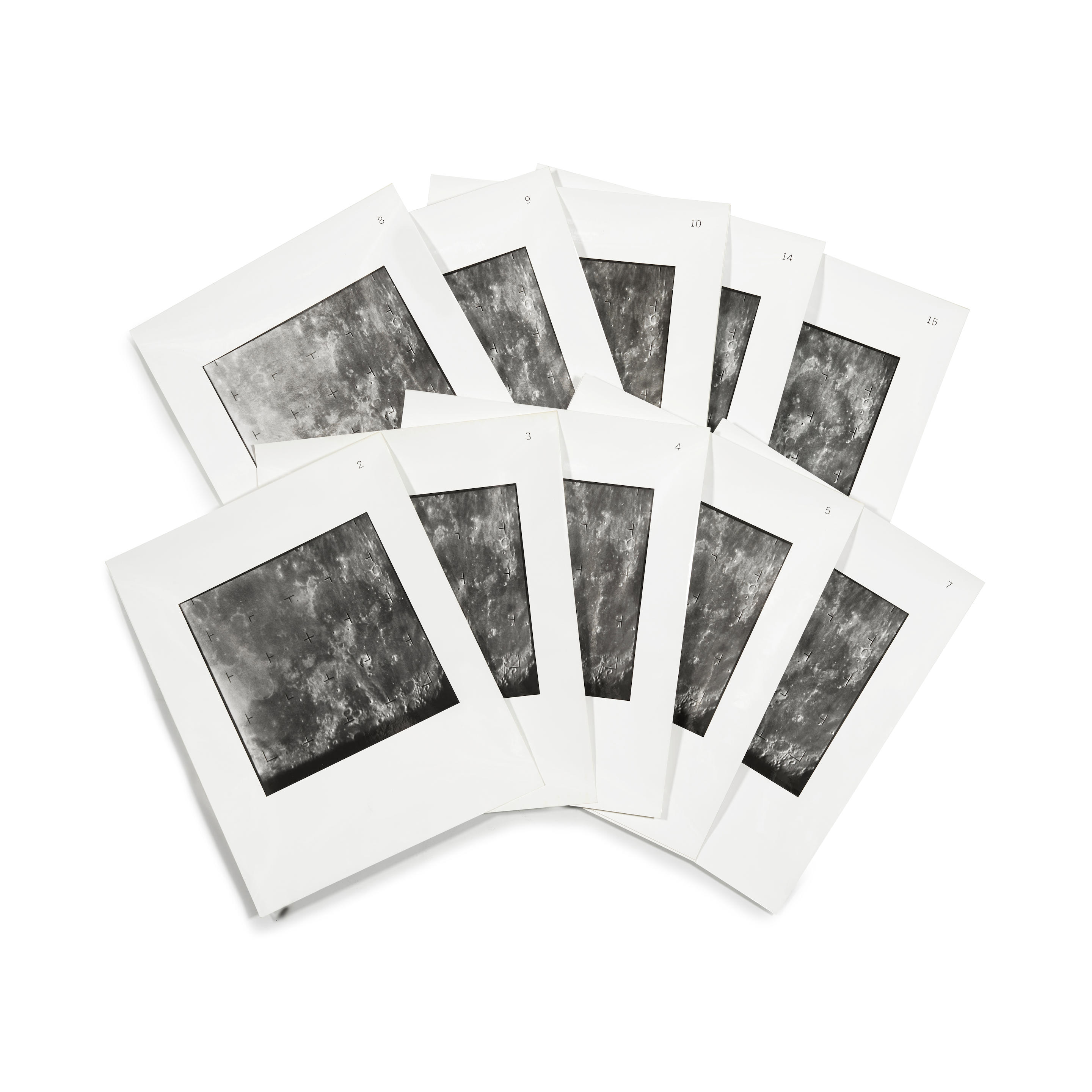

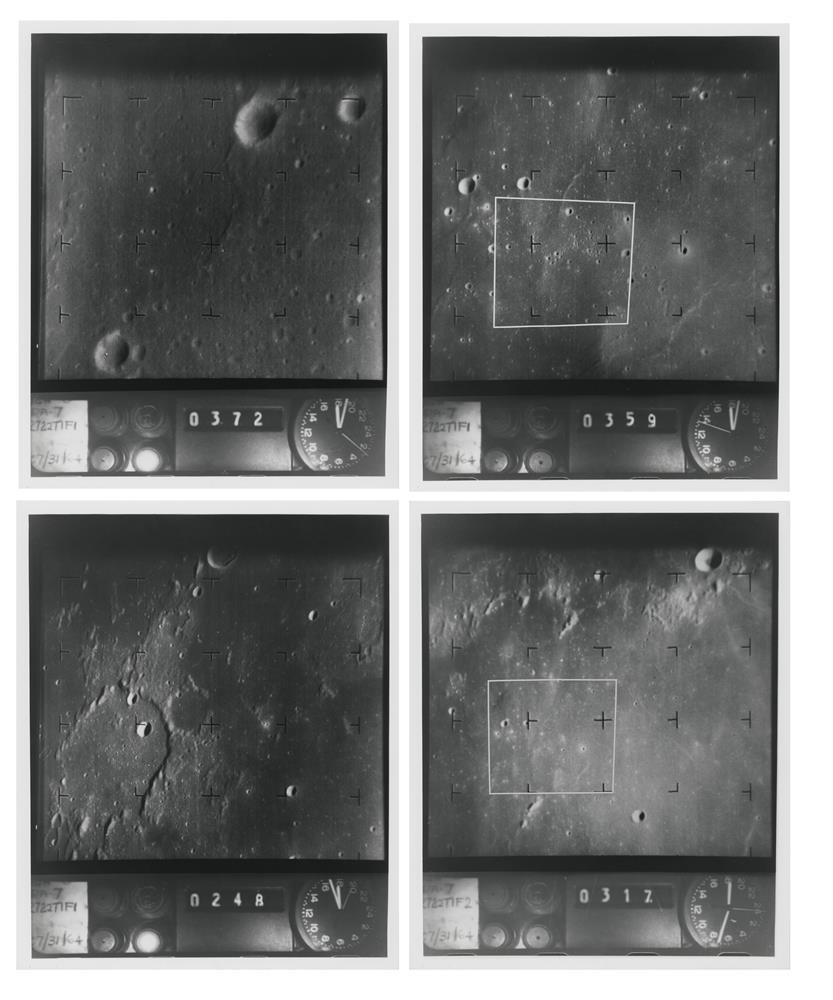
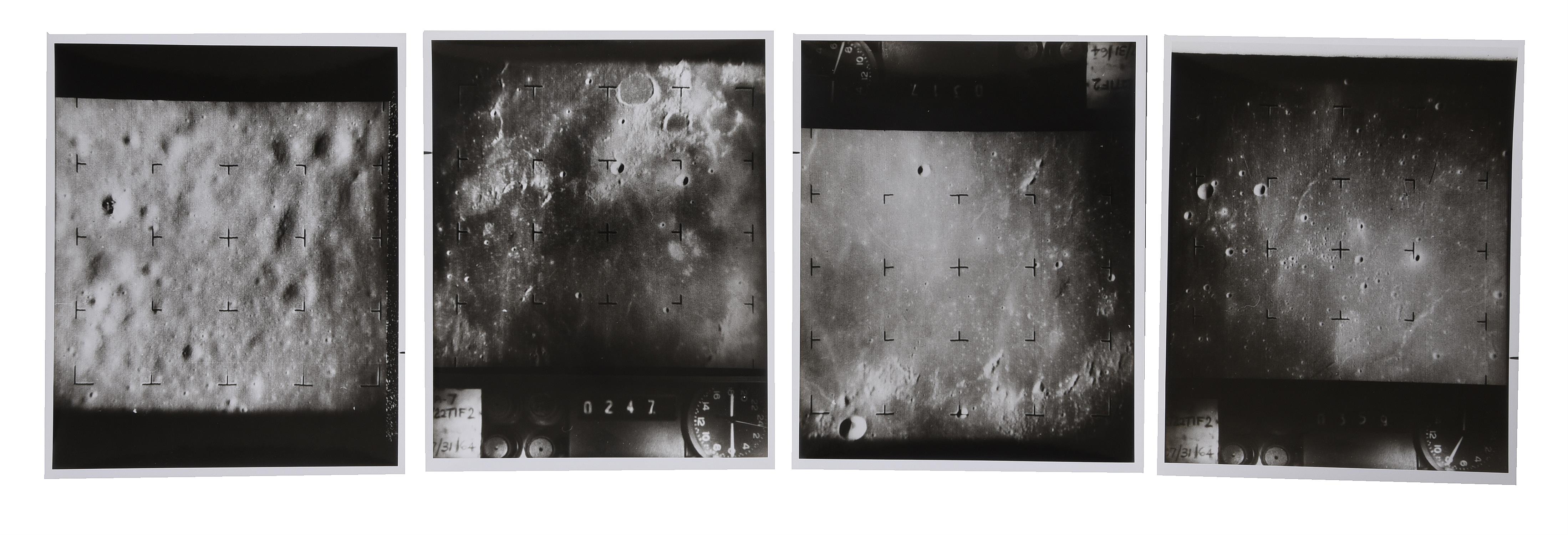
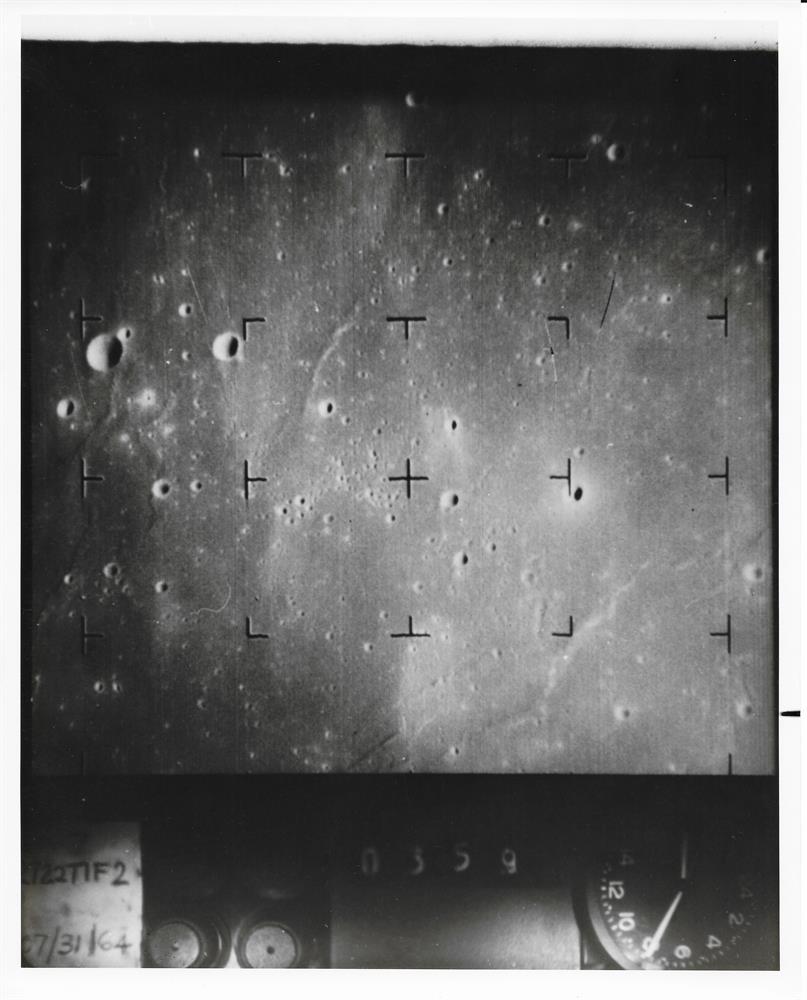
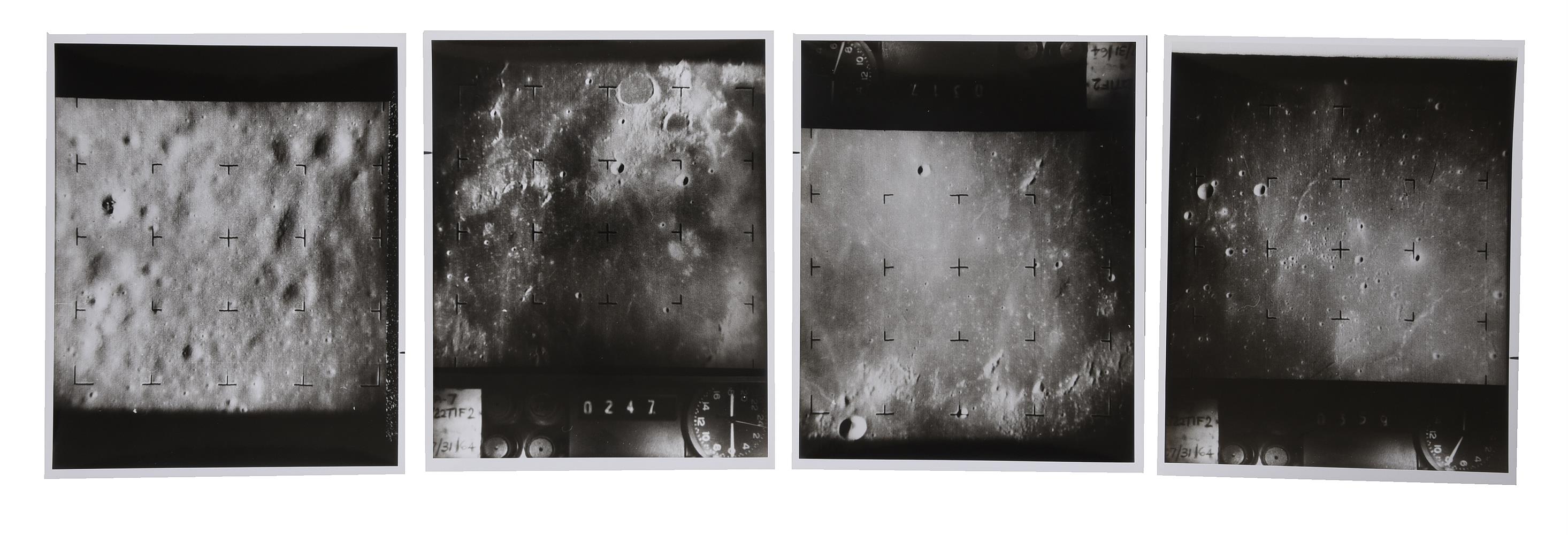

Try LotSearch and its premium features for 7 days - without any costs!
Be notified automatically about new items in upcoming auctions.
Create an alert